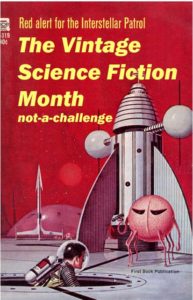 Vintage Science Fiction month takes place every January, and has a few guidelines:
Vintage Science Fiction month takes place every January, and has a few guidelines:
– read, watch, listen to, or experience something science fiction / fantasy that was created in 1979 or earlier
– talk about it online sometime in January
– have fun
If any of my readers are also interested in participating this month, let Little Red Reviewer know about your posts if you’d like them to be included in her official roundups.
Today I’m going to be discussing one of my favourite Star Trek: The Original Series episodes, “The Trouble with Tribbles.” It first aired on December 29, 1967 during the second season of this series and does not require any prior knowledge of the Star Trek universe in order to enjoy it.
The last time I blogged about Star Trek, Ruth Feiertag asked me to dedicate entire posts to single Star Trek episodes and to go into much more detail about them in the future. Ruth, I’m following your advice!
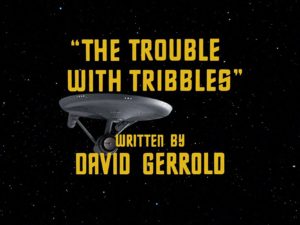 All of the Original series Star Trek episodes are available on Netflix in Canada. I’d recommend watching this episode before checking out the rest of my post unless you don’t mind spoilers from a 50+ year old tv show.
All of the Original series Star Trek episodes are available on Netflix in Canada. I’d recommend watching this episode before checking out the rest of my post unless you don’t mind spoilers from a 50+ year old tv show.
This post is going to mostly consist of a fan talking about something she really liked. There might be a little bit of proper reviewing happening, but definitely not as much as usual.
The Trouble with Tribbles
Episode description:
To protect a space station with a vital grain shipment, Kirk must deal with Federation bureaucrats, a Klingon battle cruiser and a peddler who sells furry, purring, hungry little creatures as pets.
Many Star Trek episodes throughout the years have covered serious, sensitive topics.
And then there are lighthearted episodes that seem to have been written for the sheer fun of it.
Can you guess which category “The Trouble with Tribbles” falls into?
Perhaps showing Uhura cuddling a sweet little tribble will give you another hint.
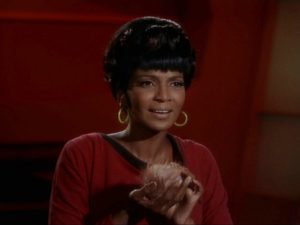
Nichelle Nichols as Uhura. She is holding her brand new tribble.
At this point in the series, Uhura and the rest of the crew had faced plenty of dangers. Seeing her cuddle a small, fuzzy, hamster-like creature given to her by a travelling salesman made me smile.
She took her new pet back to the ship and it soon gave birth to a litter of baby tribbles. Thrilled, Uhura gave them away to her coworkers.
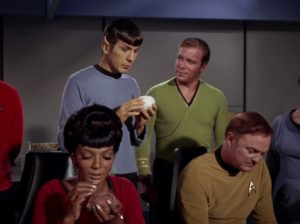
Sharing the tribbles.
At the same time, The Enterprise happened to be carrying a large load of quadrotriticale grain that was bound for a place called Sherman’s Planet.
It seemed to be a perfectly normal journey until the crew realized the tribbles were reproducing much faster than any hamster or other similar creature on Earth.
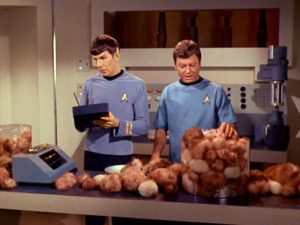
Spock and Dr. McCoy looking over a table filled with tribbles.
The question is, what is going to happen if or when the tribbles discover the grain this ship is carrying?
I’ll leave it up to my readers to discover the answer to this question themselves. What I will say is that I loved seeing all of the characters out of their element. Fighting a scaly monster on an alien planet is one thing.
Figuring out how to deal with a small, fuzzy antagonist that reproduces faster than anyone can imagine and will eat just about anything is quite another.
This is one of those Star Trek episodes that has definitely stood the test of time. The humour in it still felt fresh. Tribbles will cause mischief no matter when or where they show up, and this is even more true for people who have no idea what they’re dealing with.
If you’ve never watched Star Trek, this is a fun place to start. The episode will give you all of the information you need. Feel free to dive in.
If you’re already a fan of it, this is the sort of episode that is somehow even funnier on the second or fifth or twentieth rewatch because of all of the little tells the characters give that they have no idea how to react to these creatures and may just have a long list of antagonists they’d prefer to be dealing with instead.
I can’t recommend it highly enough.

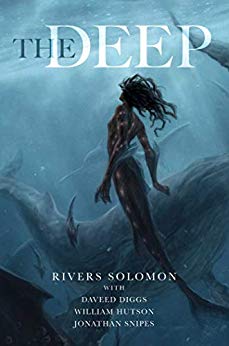
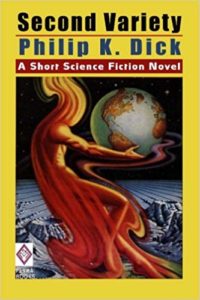 The first thing that grabbed my imagination when I was reading this tale had to do with the destruction of the natural environment. There was so much devastation everywhere the characters looked.
The first thing that grabbed my imagination when I was reading this tale had to do with the destruction of the natural environment. There was so much devastation everywhere the characters looked.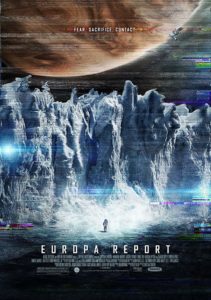 Content warning: Found footage and mental illness. I will be discussing these things later on in this post.
Content warning: Found footage and mental illness. I will be discussing these things later on in this post.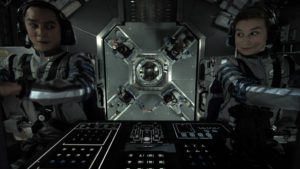

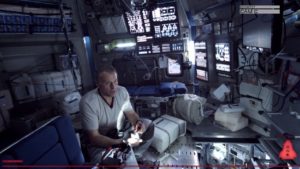
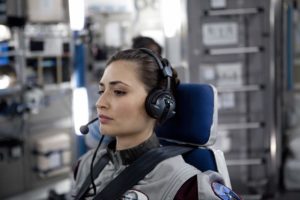
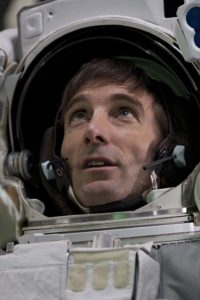
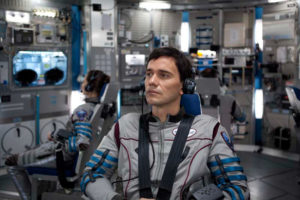
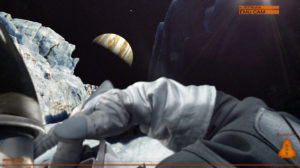

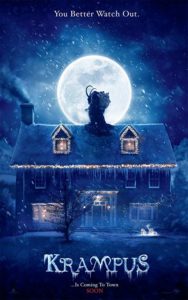 Krampus is a 2015 dark fantasy horror comedy film about a young boy named Max who has a disappointing Christmas with his argumentative, dysfunctional relatives and accidentally summons a festive demon to his home as a result of it.
Krampus is a 2015 dark fantasy horror comedy film about a young boy named Max who has a disappointing Christmas with his argumentative, dysfunctional relatives and accidentally summons a festive demon to his home as a result of it.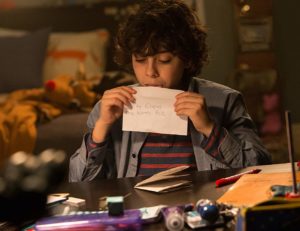
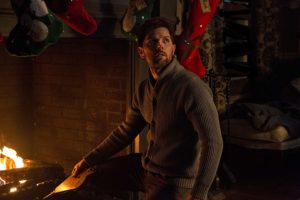
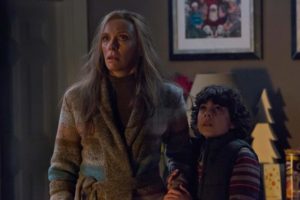
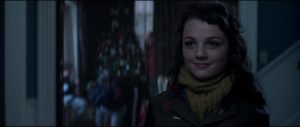
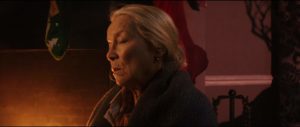
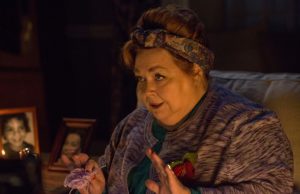
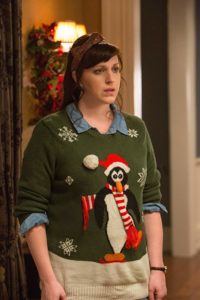
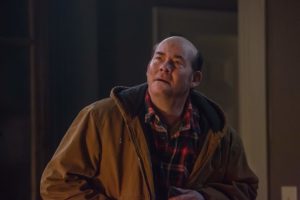

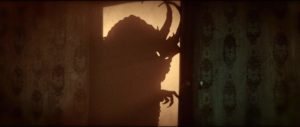
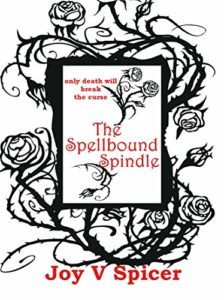 Title: The Spellbound Spindle
Title: The Spellbound Spindle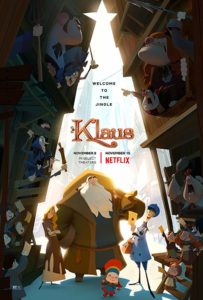 No content warning is necessary. I’d recommend this movie to viewers of all ages and backgrounds.
No content warning is necessary. I’d recommend this movie to viewers of all ages and backgrounds.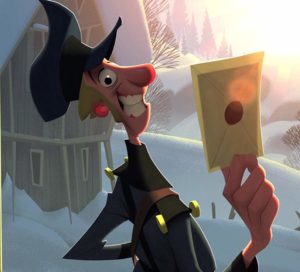
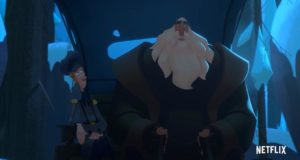
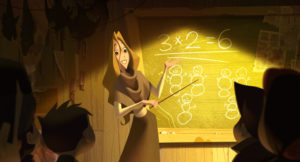
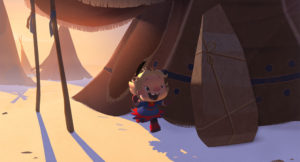
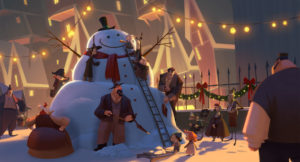
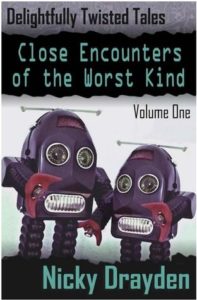 Title: Delightfully Twisted Tales: Close Encounters of the Worst Kind (Volume One)
Title: Delightfully Twisted Tales: Close Encounters of the Worst Kind (Volume One)